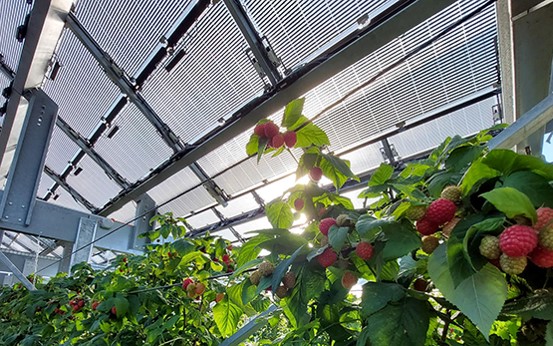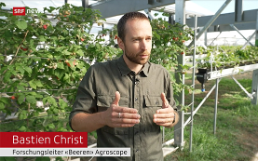
Is it possible to feed the population and supply the grid at the same time? The innovative Insolagrin solar installation at Agroscope Conthey provides an answer to this question. The installation is equipped with a new technology which is being launched as part of a large-scale pilot project. The aim of the four-year programme is to analyse and optimise electricity generation in addition to agricultural yields. The results could highlight opportunities for wider use of solar installations with no increase in land requirement.
The solution, which was developed by the Swiss start-up Insolight, consists of innovative translucent solar modules. Based on optic micro-tracking technology, these allow the dynamic passage of light whilst generating electricity. We are not simply dealing with a photovoltaic plant here, but also with a tool by which farmers to can control the amount of light let through to their crops. In this way, optimal plant photosynthesis is made possible over the course of the seasons, whilst the excess light is converted into electricity.
The pilot plant was developed to improve crop protection in greenhouses, plastic tunnels or under hail netting whilst generating power. In this way, Agroscope can study the effects of dynamic light conditions on plant development. The agronomic data are used to adapt the algorithm controlling the photovoltaic modules, irrigation and nutrient supply as a function of plant species, developmental stage and solar radiation. ‘Romande Energie’ will evaluate and improve the solar production of the plant.
Contatti

Agrophotovoltaics in the Greenhouse
To filter out useful light for vegetables in the greenhouse whilst simultaneously generating electricity: the startup Voltiris’s agrophotovoltaic system makes this possible. Agroscope is testing this solution at its site in Conthey for vegetable crops requiring especially high levels of light. (SRF 10vor10, 17.10.2022)






